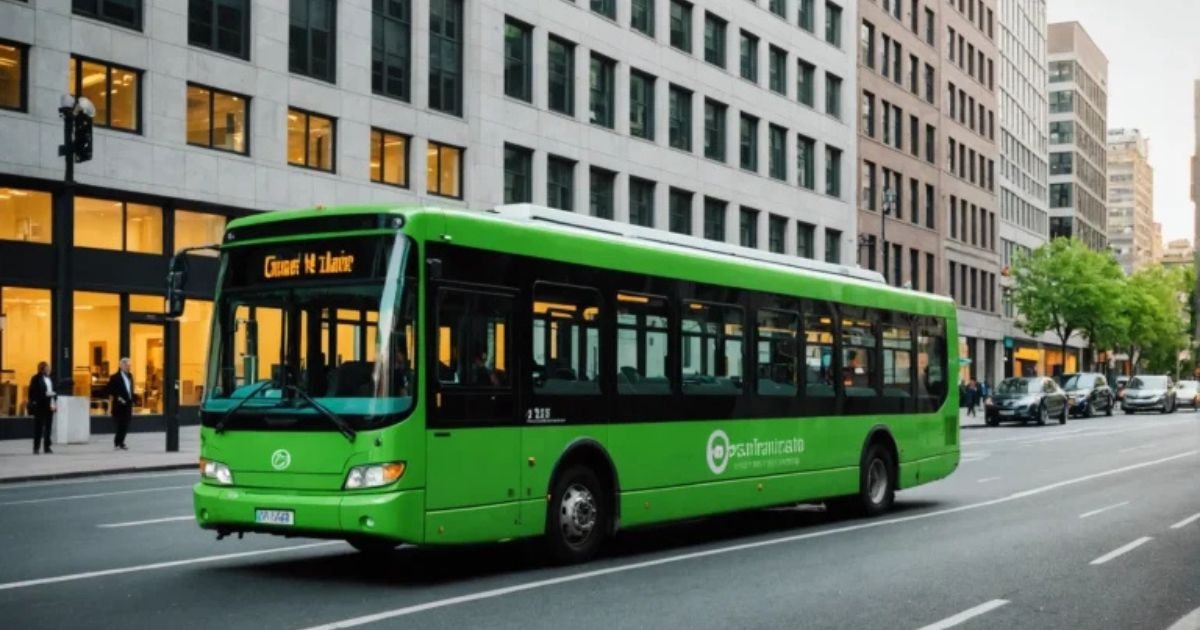
Transportation is the lifeblood of society in its present form. Our daily routines, which include work, learning, and fun, are all part of people’s daily travel. In the meantime, products are moving from one point of the globe to another to be delivered to customers. The flow of goods and people is energizing not only the markets but also the local communities.
On the other hand, the way we depend on this system is very expensive. Carbon dioxide and other greenhouse gases are mostly released by fossil fuel-powered vehicles, including automobiles, aeroplanes, trains, and ships. These gases not only contribute to global warming but also pollute the air that humans and other living creatures breathe and cause health problems. One of the many consequences of climate change is that Earth’s temperatures are rising, endangering human existence.
A change is happening. Green Technology has become the answer to all these problems. What initially was dirty and inefficient has now been made clean, smart, and sustainable thanks to technological innovations. The travel industry, through all of these changes, is entering a new era, from electric vehicles to hydrogen trains. Exploring the transportation goal of Green Technology will be the next move, along with discussing why the issue matters and speculating on the future.
What Is Green Technology in Transportation?

Green Technology stands for eco-friendly and less polluting innovations. In the transportation sector, it simply means the use of low-emission or even completely emission-free vehicles or other means, as well as the adoption of energy and materials conservation practices.
- EVs are battery-powered cars.
- Hybrid cars are both electric and fuel-powered.
- Fuel cell-powered trains and buses.
- Solar-powered vehicles together with charging stations.
Intelligent traffic control systems that not only help in cutting CO2 emissions but also keep the fuel usage to a minimum.
The objective of Green Technology is as simple as it gets: introduce clean, safe, and efficient travel means that do not harm the earth.
Why Do We Need Green Technology?
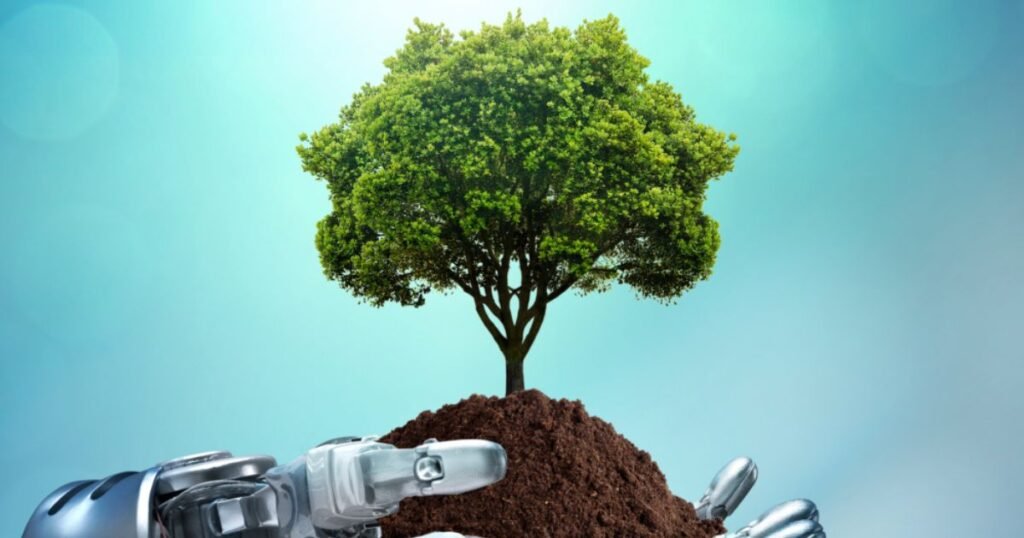
Approximately 23% of greenhouse gas emissions worldwide are caused by transportation. So, practically, the carbon footprint of each trip we make is added to climate change.
What makes this issue so great, you may ask?
- It results in very warm summers and extreme weather events.
- It negatively impacts the quality of the air and causes breathing problems such as asthma, which is a respiratory disease.
- It kills natural ecosystems and the animals that live there.
- It makes the world more dependent on oil, which in turn is getting more expensive and runs out eventually.
There is a clean energy technology solution that can address all these concerns, and this is precisely what Green Technology is about. Cleaner vehicles mean less harmful emissions. Smarter systems help in reducing not only traffic but also the amount of fuel that goes wasted. The global reliance on oil is reduced by renewable energy. All of the above changes can rehabilitate the urban environment, thus making cities a better place for your children and our planet safer for the next generation.
Electric Vehicles: Driving the Change
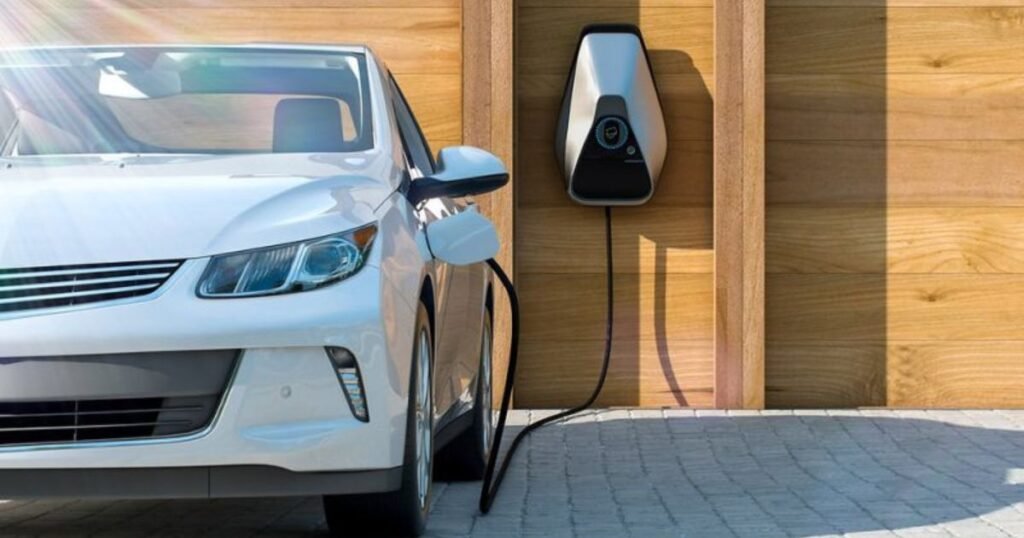
The Green Technology revolution is represented by the face of technology – Electric Vehicles (EVs). The establishment of electric SUVs is estimated to use rechargeable batteries, which can be recharged by various methods like plugging into a power outlet or utilizing other potential energy at a location.
The benefits of EVs:
- No emissions are produced by the vehicle.
- Compared to gasoline-powered vehicles, the use-cost per one mile of range is much lower.
- The experience under the hood is less noisy, smooth, and gentle weighing might be the power.
- Less oil will have to be imported from other countries, thus increasing the country energy security.
The major carmakers like Tesla, Nissan, and BYD are producing EVs at a large scale. The government is taking steps to support the market e.g. giving tax credits, opening free charging stations, and providing other incentives.
The prediction of the experts is that with hundreds of millions of EVs on the road by 2030, the change will be such that cities will be transformed into cleaner and healthier places to dwell.
Public Transport Goes Green
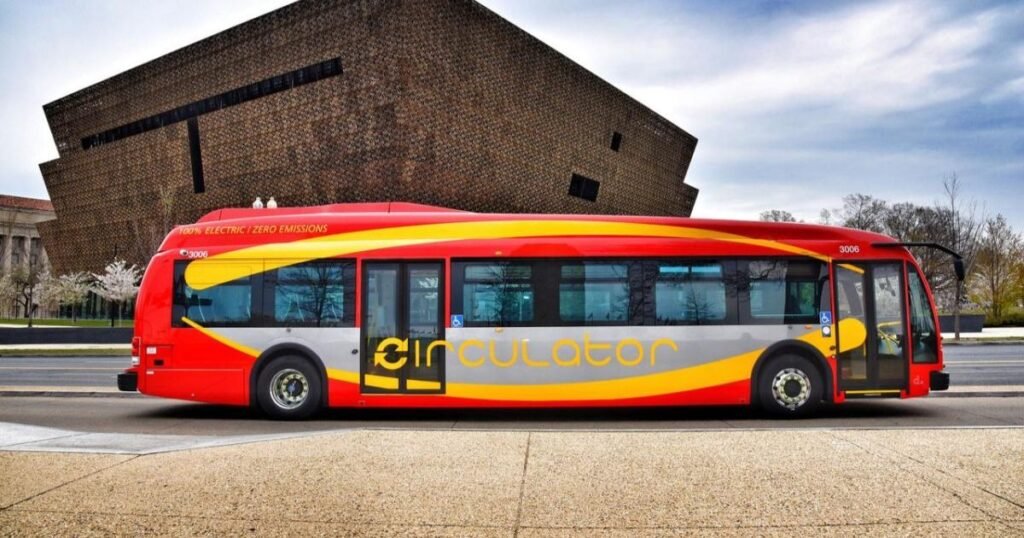
Cars are only one part of transportation. Buses, trains, and ferries move millions of people daily. Here too, Green Technology is making a difference.
- Electric buses are spreading worldwide. Cities like Shenzhen, China, operate thousands of battery-powered buses.
- Hydrogen trains in Germany and the UK offer zero-emission alternatives to diesel locomotives.
- Solar-powered ferries are running in India and Scandinavia, reducing fuel costs and pollution.
Public transport powered by green solutions can reduce emissions at scale. Imagine entire cities where daily commuting leaves no carbon footprint.
The Role of Renewable Energy
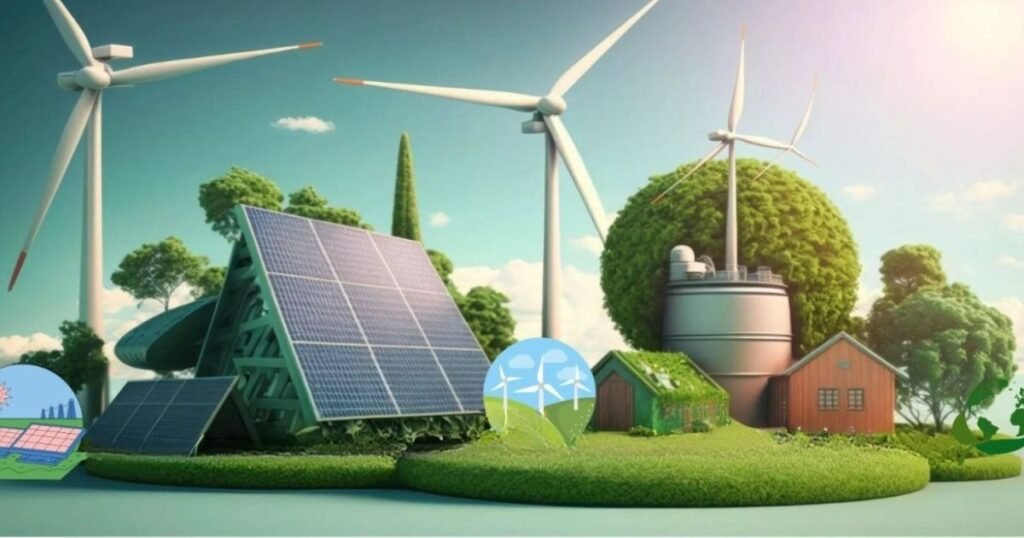
Green transport only works if the energy behind it is clean. Charging an electric car with coal-based power still harms the planet. This is where renewable energy comes in.
- Solar power can run EV charging stations.
- Wind farms can supply clean electricity to trains and buses.
- Hydropower can provide stable energy for transport networks.
Linking Green Technology in transport with renewable energy ensures a fully sustainable system.
Aviation and Green Technology

Although it connects people worldwide, the aviation industry is one of the most difficult to reduce carbon dioxide emissions. Still, innovation is underway.
- Biofuels made from plants or waste are already in use for some flights.
- Electric planes are being tested for short-distance travel.
- Hydrogen-powered aircrafts are in development, promising long-term solutions.
Though progress is slower here, Green Technology gives hope for clean, quiet, and efficient air travel in the future.
Shipping Industry Goes Green

Ships carry about 90% of global trade. Nevertheless, most of them use heavy, polluting oil. Therefore, the shipping industry is now trying out Green Technology solutions.
- Wind-assisted ships employ contemporary sails to trim down the consumption of fuel.
- The battery-powered ferries operating in Norway and Finland have been able to decrease the use of diesel considerably.
- Seemingly, new and cleaner marine fuel oils provide lower emissions than the ones currently used without the need to change ship engines.
- Green shipping will be the pivotal instrument to save the seas and the air as trade presses on.
- One of the major advantages of electric vehicles is their lower cost per mile in comparison with gasoline cars.
- EVs provide a barely noticeable, quiet, and comfortable drive.
- The use of electric cars leads to a decrease in dependence on oil imports and worldwide oil consumption.
Major carmakers like Tesla, Nissan, and BYD are already manufacturing EVs in large numbers. Additionally, governments are also promoting the adoption of EVs by offering tax breaks, providing free charging, and offering incentives.
According to the experts, there will be millions of EVs on the street worldwide by 2030. The massive transition will result in cities turning into clean and healthy living places.
Smart Cities and Green Transport
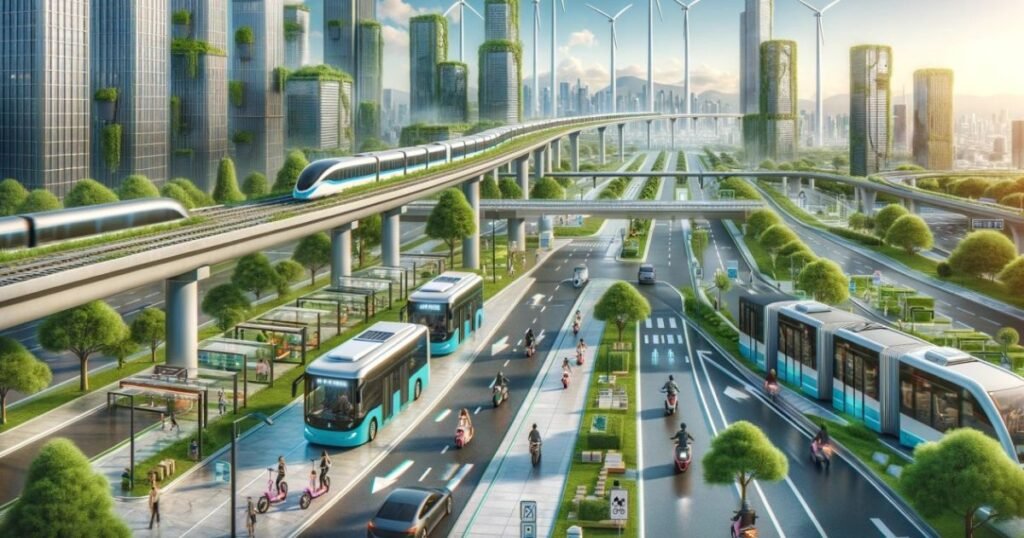
Transportation is primarily concerned with the vehicles that people use. It is the method of management a city follows to move the people who live in it. Green Technology helps cities become more intelligent and more environmentally friendly.
- Contrary to what one might believe, smart traffic lights not only help the environment but also the drivers of the city, as a result of the lessened congestion and the saving of the fuel that is unnecessarily burned.
- Bike-sharing programs are available for the residents to take advantage of, and these programs are totally eco-friendly alternatives to cars.
- In addition, electric scooters and small vehicles for the last mile will eventually be the reason for the disappearance of short car trips.
- A green transport-powered smart city is not just a city that is cleaner, but also a city that is quieter and more efficient.
Green Technology has an Impact on the Economy

A lot of people think that the decision to go green is really costly. Hence, the question of whether it is worth trying. Well, research results recommend that Green Technology will save us a lot of money in the long run.
- An electric engine has only a few moving parts, so it is safe to say that the maintenance costs are low.
- The money that goes to fuel can be used to compensate for other aspects of the electric vehicles, making these cars cheaper to run.
- Not only that, but the Industries of Green Transport are becoming a source of new employment in Renewable Energy, Manufacturing, and the Service Sectors.
- The International Energy Agency (IEA) report states that the green transport sector can generate millions of new jobs all over the world by 2030.
Challenges in Adopting Green Technology

The shift to green transport faces challenges:
- Even though EVs are much more environmentally friendly, their price is still a big issue.
- There aren’t many charging stations in some places.
- Poorer countries do not have a good network of roads and other necessities to cater to the transport needs.
- The people who make a lot of money from oil and gas are fighting to keep things the way they are.
However, these obstructions are getting smaller. The main reason for that is the increase in demand, so the prices will drop. The charging networks are not limited and are covering more areas, plus solar energy is getting cheaper every year.
Future of Green Transportation
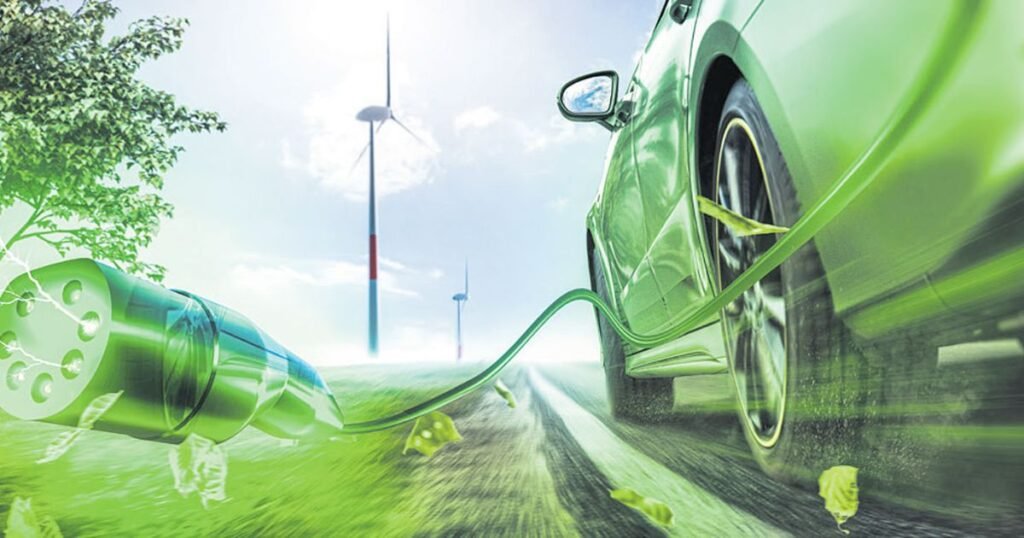
Green transportation is the foreseeable future of the planet, and it is very interesting as well. By 2050, the majority of vehicles will most probably be electric, powered by hydrogen, or hybrids. Metropolises of the future will use clean power from the sun and smart grids to distribute it.
Green technology will not only bring down the pollution but also lead to a simpler life for people. This is because of the clean air, silent streets, and healthy communities, which will be the new normal for future transportation.
Conclusion
Transportation is the backbone of the world today, but it still needs to rely on methods that are harmful to the planet. Cars, planes, and ships that run on fossil fuels pollute the air and water; at the same time, they also contribute largely to climate change. We are witnessing a turning point with the growth of Green Technology. Besides the electrification of the car, it is also possible to imagine hydrogen trains, solar-powered buses, even smart city systems which all come together to produce a new way of transport. To the great relief of mankind, aviation and shipping, which were among the hardest to decarbonize, are on their way to become carbon-neutral through the use of biofuels and battery advancements.
The substitution is not only about saving the environment. It is about creating healthier cities at a much lower cost and of course, promoting the economy. Although there are still some problems such as the price of batteries and the lack of charging stations, a lot has been done already. It will be a big step towards cleaner, smarter, and more sustainable transportation if only we manage to keep our innovation and cooperation strategies on global level going along this path.
The revolution has already arrived. Green Technology is not just for those who opt for it; rather it is the future of humankind movement.
FAQs
1. What is Green Technology in transportation?
One aspect of green technology is the introduction of associated environmentally friendly innovations such as electric vehicles (EV), trains with hydrogen fuel, and systems powered by renewables which emit zero or almost zero.
2. Why is Green Technology important for transport?
This is because the sector of transport is among the biggest emitters of greenhouse gases. Going green, therefore, not only leads to a decrease in pollution but also saves the earth resources.
3. Are electric vehicles really sustainable?
Yes. EVs produce no tailpipe emissions, and when powered by renewable energy, they are far cleaner than gas cars.
4. Is Green Technology expensive?
Of course, EVs dont let out exhaust or other pollutants directly from the tailpipe and are extremely clean when running on wind, solar, or other renewable energy sources.
5. What role does renewable energy play in transport?
Firstly, it is the source of power for EVs, trains, and buses. Consequently, the whole system, thus including the parts, is sustainable.
